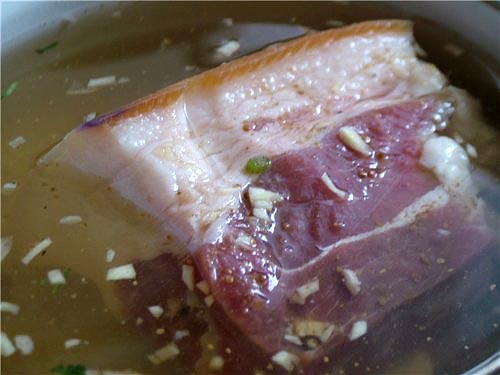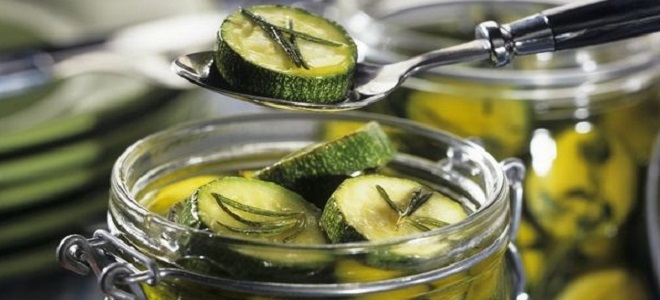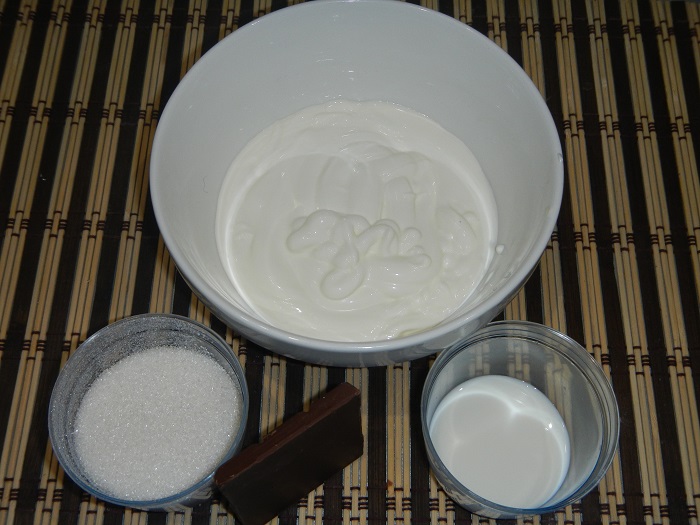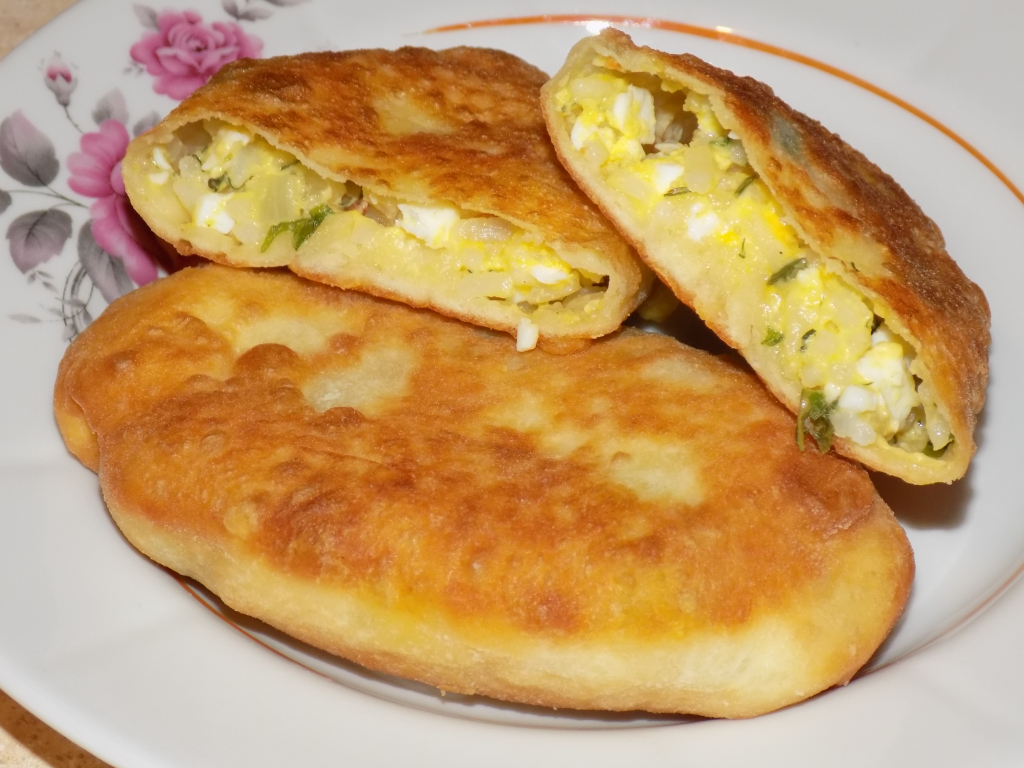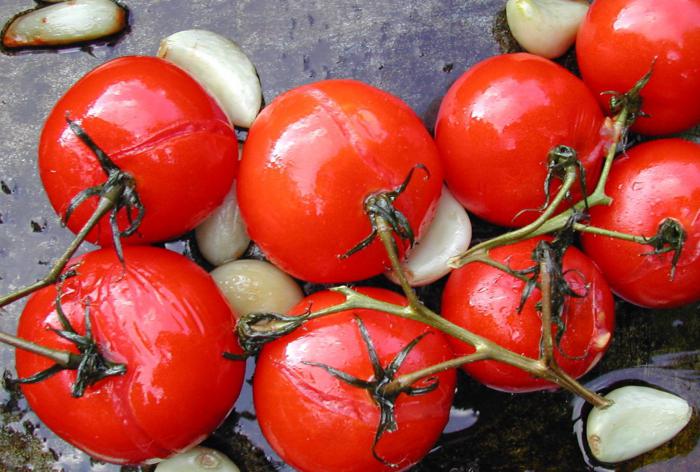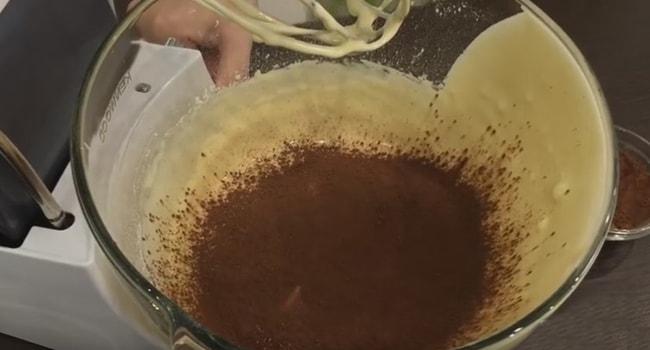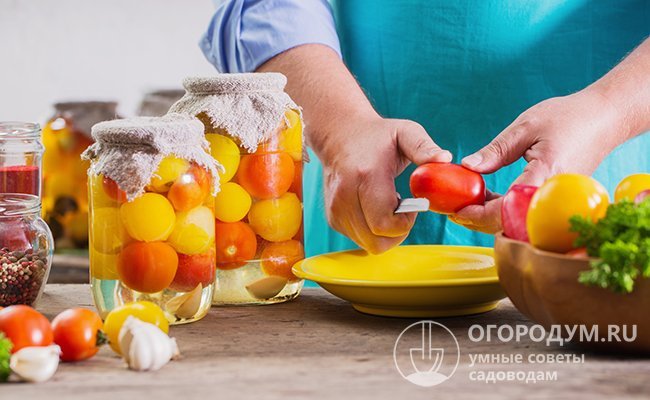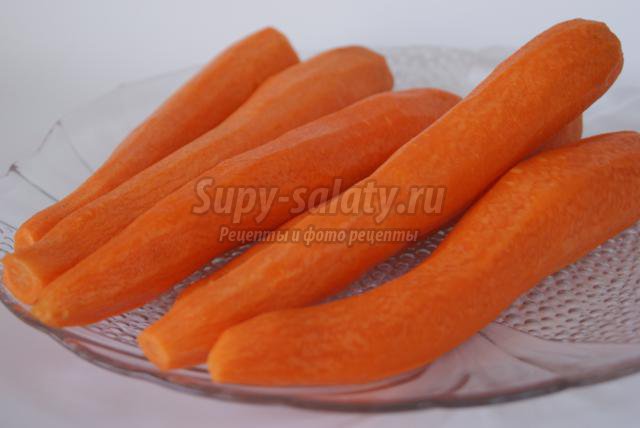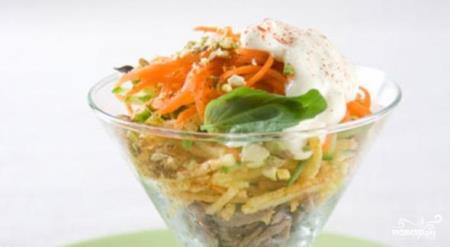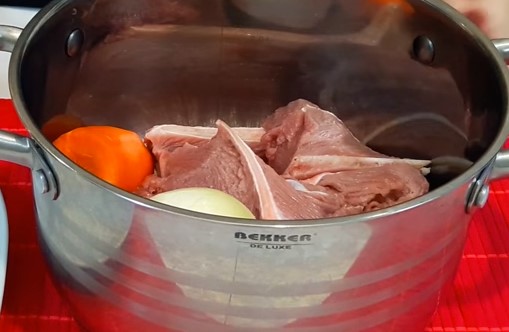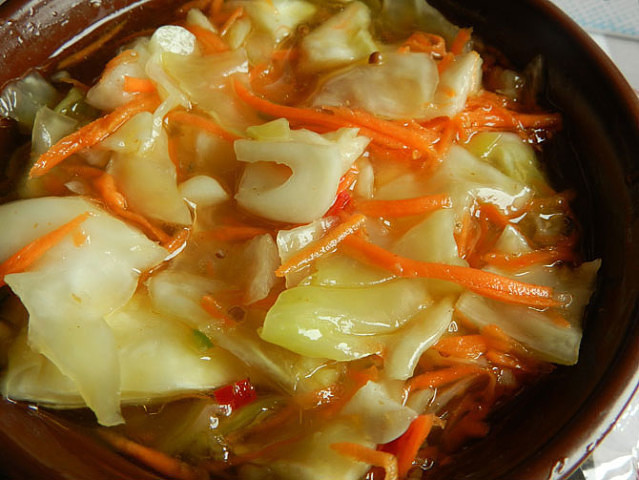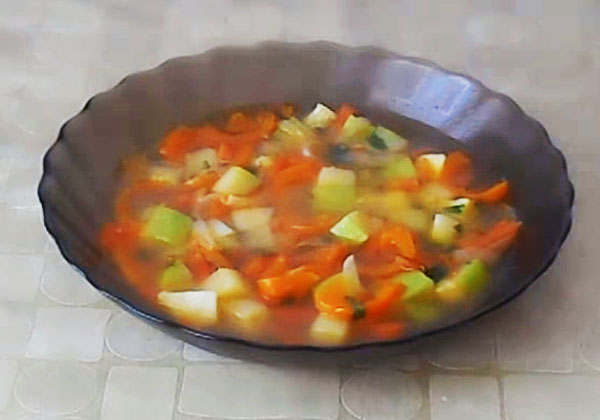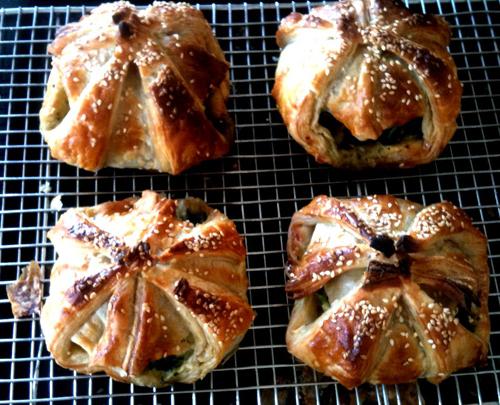Captain's gin recipe. Homemade gin recipes
It is an alcoholic beverage with a strength exceeding 37.5%. The gin recipe is based on the distillation of alcohol derived from grain. A mandatory component of the drink are herbal spices.
A few words about gin
This type of alcohol appeared in the XVII century. The Dutch doctor Francisco Sylvius invented it. Together with the Dutchman Willem van Oranje-Nassau, who in February 1689 became the King of England William III, the drink came to England.
Today there are 2 types.
Gene Dutch. There is a special name - jenever; less than English, strength, stronger taste. The preparation of the drink involves the distillation of alcohol with barley, sometimes aging in barrels of wood. Outwardly similar to.
Gene English. At the initial stage, it owed its popularity to the low-quality wheat market, which was not suitable for making beer, and the government’s permission to sell unlicensed alcohol.
Subsequently, a difficult story passed with prohibitions, restrictions, riots. After the “Genie Act” of 1751, it gained status, which laid the foundation for further orderly development and use of the drink. Until the end of the 18th century, it was produced sweeter than modern English, or London, gin.
Finally, the English gin received the status of an elite strong alcoholic drink in the 19th century. Before that:
- the technology (1832) for the distillation of alcohol changed - it became vertical;
- a recipe for dry London gin appeared;
- there was a need to hide the taste of quinine in the tonic, taken as a prophylactic against malaria, and gin was the most suitable product for this.
According to the recipe, gin was made and sold illegally in the United States during the Prohibition period. The drink became the basis of many cocktails: Martini, Pimm’s N ° 1, Negroni, Gin Twist, Vesper, Gimlet (Gimlet). They drink it, mixing with vermouth, vodka, tonic, soda, ginger ale, lemon, grapefruit and orange juice, cranberry juice, lime juice.
There are many manufacturers of gin, types of drink.
In the premium class it is:
- Finsbury - began to be manufactured in 1740;
- Greenall’s - on sale since 1762;
- Gordon’s Gin, whose history began in 1769;
- Plymouth, produced since 1793;
- having the name of the New Zealand gin, has been produced since 1845;
- Beefeater Gin - the beginning of the release of 1876;
- Hendrick’s gin, called Scottish gin, with the aroma of a Bulgarian rose and cucumber, including 11 more natural ingredients;
- Bombay Sapphire, in which there are 10 natural additives (angelica forest, almonds, paradise grains, lemon peel, cubeba berries, licorice, cassia, juniper berries, coriander, iris root);
- Tanqueray, which includes lime, ginger, bay leaf, has been produced since 1830.
How to make gin

There are many recipes for making gin at home:
- Simple, with juniper berries. Use 0.5 kg of ripe or dry fruits:
- berries pour 1 liter of moonshine or alcohol (70%);
- add spices (preferred);
- insist 60-90 days;
- distilled using moonshine.
- Complex, with 1 kg of fresh, ripe juniper berries. A drink is often tastier than purchased:
- the berries are crushed, poured using 1 liter of warm water;
- add 4-5 g of dry yeast, 100 g of sugar;
- close the container with a water seal and leave to ferment for 1-1.5 weeks;
- do double distillation, leaving the middle part.
- Under the English gin Beefeater:
- 200 g of fresh juniper berries are crushed, pour 10 l of moonshine (you can sugar alcohol);
- the container is left to infuse in a dark room for 2-3 weeks;
- add purified water, reducing the strength of the drink to 20%;
- distill 1 time, removing the pervak \u200b\u200band tail;
- the remaining drink 1-1.5 week insist.
- With blue juniper berries from the Alcofan website:
- 22 g of berries, 7 g of coriander seeds, 1 g of fresh lemon peel, 2 g of orange, a pinch of anise, hyssop, fennel and licorice are pressed with a rolling pin in a mortar;
- fall asleep in a jar of glass, pour 1 liter of moonshine (50%) (alcohol can be);
- insist 7 days in the dark, constantly stirring;
- filter the drink;
- diluted with water, bringing the strength to 33%;
- perform distillation, selecting a stream with a strength of 50%;
- dilute the drink to 45-50%;
- give him 1 week to rest.
Homemade gin without distillation
The drink can be prepared without distillation. They make it from 0.5 l of vodka, alcohol (50%) or the same strength of moonshine. You will also need 10 juniper berries and sugar (25 g) for the syrup.
First, the berries are crushed, placed in a glass container, poured with alcohol and insisted for 14 days. Syrup is prepared by adding sugar to half a glass of water, heating it until bubbles form. Next, gin from moonshine is prepared using this technology:
- infused alcohol is filtered;
- add syrup;
- the drink is left to rest for 2-3 days, after which it can be drunk.
The recipe given can be varied by replacing juniper berries with other ingredients.
You can use other recipes for alcohol without distillation:
- moonshine (0.5 l) pour berries (70 g), lime, zest of lemon and orange;
- insist 2 weeks;
- add water, bringing the strength of the drink to 45%;
- fructose is administered and insist for another 7-10 days, occasionally shaking.
Original recipe
One of them is inspired by the imitation of the Plymouth drink. A gin similar to it is prepared at home by distillation in a distillation cube.
The order of operations:
- crush 25 g of juniper berries, 8-10 g of whole coriander, 3-5 g of zest from orange and lemon, 1-2 g of angelica, 2-4 g of iris root, 0.5-1.5 g of cardamom;
- pour 1.5-3.0 liters of moonshine into a distillation cube;
- set the sieve, pour the transferred ingredients into it;
- set the refrigerator on top;
- turn on medium heat and heat the cube;
- 20-40 ml of the resulting drink is poured;
- 60-70% of alcohol is selected on a stream;
- gradually reduce the strength of the drink to 45-48%.
Quick recipe
Good alcohol will not work without distillation. A quick recipe involves making gin at home in 4-5 days. To do this, you need juniper berries (25 g), coriander (3 tsp), caraway seeds (2 tsp) and 610 ml of alcohol (96%):
- alcohol is divided into 2 parts - 330 and 280 ml;
- bred them to 80% strength, adding, respectively, 70 and 60 ml of water;
- juniper berries are poured in the first, cumin and coriander in the second and insisted for 4-5 days, constantly mixing;
- infusions are filtered, water volumes are increased 1.5 times each, separately distilled;
- from the first outlet 10 ml of alcohol are poured, 260 ml of each distillate are taken, mixed, the volume is increased to 1 liter with water.
After all this, the drink is ready to drink.
Classic gin is made from high-quality alcohol for cereals and juniper berries. However, different manufacturers seek to make an original drink and combine their own components. Homemade gin can be prepared according to an original recipe created by a chemist from Holland, or add any other ingredients for taste and aroma. The composition of gin is useful and natural, so it can be safely attributed to medicinal drinks (of course, in moderation). It is easy to cook it yourself without additional equipment.
The gin recipe differs depending on the taste of the manufacturer. It is a mixture of herbs that give it a distinctive aroma. The classic way to make gin involves only grain alcohol and juniper fruits, but this drink can contain up to 120 ingredients. Traditionally, lemon zest, violet root, caraway seeds, coriander and even rose petals are added. Fans of sweet drinks should pay attention to such ingredients as caramel and other spices.
Homemade gin without distillation
The simplest gin recipe at home does not require distillation. It is prepared by insisting berries on alcohol and subsequent filtration. This method is especially popular because of its simplicity and accessibility of all components, but the taste of the finished drink will differ from the classic gin.
For 0.5 l of alcohol (it can be replaced with home-made moonshine) you will need:
- 10 small juniper berries (about 30 g);
- sugar or granulated sugar - 25 g;
- 0.75 liters of water.
The fruits of the juniper must be mashed to a state of slurry, and then pour alcohol and insist for at least 10-14 days in a dark room. Then you should boil the sugar syrup and add to the tincture. After a few days, it remains to filter and pour into glass containers for long-term storage. Despite the fact that such a drink is prepared without distillation and is more reminiscent of tincture, its taste will resemble the original.
London's basic dry recipe
The classic gin recipe involves a distillation step. To do this, you will need a distillation apparatus, with the help of which the alcohol will be cleaned of harmful impurities. For 1 liter of alcohol or moonshine you will need:
- 30 g of juniper berries;
- citrus zest (orange and lemon);
- spices: cinnamon, coriander, fennel, licorice, anise - 0.5 g each.
To begin with, the berries are kneaded to a state of gruel, mixed with spices and insisted on alcohol for a week. Then the drink is diluted with water until its strength reaches 40 degrees. During distillation, it is necessary to calculate in advance how many heads and tails should be separated. At first, they are ready ready (at least 20-25 ml) - they contain fusel oils and are unsuitable for consumption. Then pure gin begins to stand out, which is collected in a separate container. When the alcohol strength is 60 degrees (this can be checked with a special device - an alcohol meter), the tails should be separated. They also contain impurities, but are suitable for industrial use or for adding to the next batch of mash.
Gin, made with your own hands, does not differ in taste and quality from expensive store varieties. After distillation, it is diluted with water to 45-48 degrees. It is undesirable to lower the fortress below 42 degrees, as this will affect the taste of alcohol.
Original recipe
You can also make gin at home for a more complex recipe. It is close to the classical method and is also produced by distillation. For 0.6 l of alcohol or moonshine you will need:
- 25 g of juniper fruit;
- citrus zest;
- spices: coriander, caraway seeds and others.
The difference between the original recipe and the classic one is that tinctures are prepared in separate containers. In order to prepare gin, it is necessary to insist berries on alcohol in one bottle, and zest with spices in another. They must spend at least a week in a dark room, after which they are divided into fractions. The distillation is also carried out separately, and after the procedure, two types of liquid are combined and poured into glass bottles for long-term storage.
Quick recipe
There is another way to make gin at home. He will need a distillation cube without a sucker. You will also need a metal sieve, the size of which coincides with the diameter of the neck of the cube. Spices and spices are placed in it (their amount does not differ from other recipes) and set under the cover of a distillation cube. Alcohol or moonshine is poured into the apparatus directly through spices, and then the distillation procedure is carried out. Pure distillate retains the taste and aroma of spices, it remains to be insisted for several days and poured into glass containers.
Homemade gin is a tasty and healthy drink that can even replace purchased alcohol at the festive table. It can be prepared even in the absence of moonshine. Useful tips and tricks on how to make gin really tasty and aromatic can be seen in the video:
As a rule, gin is used as the basis for the preparation of various cocktails. Thanks to the rich aroma and characteristic coniferous taste, we loved the gin and tonic so obtained by mixing gin with tonic and ice.
First obtained in England in the 17th century, gin has not lost its popularity today, although it has a rather high cost compared to other strong alcohol. Surprisingly, gin was originally used as a medicine in the treatment of insomnia and malaria, and it was given to soldiers as a cure for fear.
Navigation
How to make gin at home?
The preparation of gin, in fact, does not differ from the recipe for making ordinary vodka, and the characteristic flavor is given by various additives on which grain alcohol is infused. Knowing the recipe for gin, it can be reproduced at home, if it is ideal to clean the moonshine.
It is necessary to overtake it twice, and then pass it through a charcoal filter to eliminate the smell of fusel oils.
Main ingredient used for tincture, make juniper berries, thanks to which the gin gets a characteristic coniferous flavor. That is why gin is often referred to as juniper vodka.
At home, mash for gin is prepared on a barley basis, in which juniper berries, previously crushed in a mortar, are added. It is recommended to add 1 kg of juniper berries per 1 liter of mash, re-added to the finished mash before distillation. Juniper berries can be taken both fresh and dried, previously soaked in water.
The characteristic golden hue inherent in the Dutch gin in the factory is provided by insisting on raw materials in oak barrels. At home, it is permissible to insist on moonshine on oak wood chips, which is simply put in a container. Chips can be pre-insisted on wine or honey, which will provide different taste shades of the resulting gin.
To get the English gin, which is stronger and more aromatic than the Dutch one, the ready-made alcohol is insisted on the juniper, and not the mash, and the brewed moonshine is required to be distilled for increasing the strength. The strength of the English gin reaches 47%, while the Dutch does not exceed 37%.
How to clean moonshine?
To make a real gin from moonshine, it is necessary to ensure its double distillation. Before the repeated procedure, it is necessary to clean it with a charcoal filter, and also dilute with distilled water by 1/3 of the volume in order to reduce the percentage of fusel oils in the product.
The first 50 g of distillate and tail fractions containing less than 45% alcohol are not used in the preparation of gin. Secondary alcohol used to make gin contains about 80% alcohol, so it is diluted with distilled water to the desired concentration.
What are the recipes for gin?
Gin lovers experiment with herbal seasonings and various additives used in the manufacture of the product, which give the drink different shades. The most popular are lemon peel, cinnamon, coriander, although up to 120 components are known that are used in the preparation of gin. The main thing is that the coniferous taste for juniper, which makes the drink genie, remains predominant, and the composition of aromas is harmoniously combined with each other. Next, we will offer the most popular home gin recipes:
The clove recipe. It has a slight aftertaste of cloves and lemon, obtained by adding lemon zest and dried cloves to the infusion. Juniper berries prevail in the composition in the proportion of 0.5 kg per 10 liters of moonshine.
The recipe is "Spicy aroma." For 10 liters of purified moonshine, 0.5 kg of juniper berries, a little cardamom, coriander and fennel are added. Moonshine is infused for a week, after which it is filtered through cheesecloth.
The recipe is "Old Guilder". It has a complex composition, the proportions of which in most cases are selected individually. For 10 liters of purified moonshine, 0.5 kg of juniper berries is required. The composition of the infusion includes ginger, nutmeg, sesame seeds, angelica, cinnamon, star anise.
The recipe is "Gene English". For the preparation of mash, it is not barley that is used, but wheat. Twice distilled and peeled moonshine is infused with juniper berries for a week in a proportion of 10 liters of moonshine 0.5 kg of juniper.
The recipe "Old Tom." It differs from other brands with its sweet taste, which is provided by adding powdered sugar to the finished drink, infused with juniper berries.
Loved by many, "Gin and Tonic." A simple recipe. Gin is mixed with tonic in a ratio of 1 to 2, after which ice cubes and a slice of lemon are added.
The recipe is "Ladies'", so named for its low alcohol content, since gin is diluted in a proportion of 1 to 3, as well as the addition of orange or cranberry juice to the composition.
The list of recipes is not exhaustive, since the many components used create an extensive space for experimenters. Adhering to our recommendations, you can easily make a real gin by decorating the festive table, as well as surprise your guests with a delicious drink.
Gin is one of many people's favorite drinks. This type of alcohol is used as an independent drink, but, in addition, gin is a part of many alcoholic cocktails. Experienced moonshiners easily prepare gin at home, and the basic ingredient of this drink is high-quality moonshine. Home-brewed gin, the recipe of which is quite common, is done in several ways.
Features
Regardless of which gin recipe is chosen at home, this drink will require distillation during preparation. If you ignore this stage of the preparation of gin, then instead of it you will get the usual tincture on juniper berries.
Moonshine Gin
Gin at home is made from a variety of spices and fruits. The most popular gin recipes are those according to which citrus fruits (lemon peel, grapefruit, orange), spices (cinnamon, vanilla) are used to make a drink.
Recipes for making gin can be divided into the degree of complexity of their preparation:
- According to this recipe, the fruits of juniper are added to the must of cereals, after which the drink is distilled.
- Lazy: they get such a drink from, but in this recipe maceration of the components of the drink is excluded.
- Tru Jin: With its characteristics, this drink resembles a real gin. It is prepared as follows: juniper and citrus fruits insist on alcohol separately. After that, both types of liquid are poured into the distillation cube of the moonshine still and distilled twice.
- The real gin: this is the most difficult recipe for making a drink, since it involves saturating moonshine with aromas of citrus and spices. The next step is to blend the aromatic moonshine.
How to cook gin?
There are several recipes for making excellent gin at home, but first of all it does not hinder to consider the classic way of making this type of alcohol. To obtain a classic gin, you will need a moonshine equipped with a steamer. Home gin recipe looks like this:
- First, they select all the necessary components for making the drink: 2 liters of high-quality peeled double moonshine, 45 grams of juniper, 6 grams of zest of fresh orange, 8 grams of coriander. Also, for the preparation of gin, you need to take 3 grams of zest of lemon, cinnamon and, in addition, only one gram of anise, fennel and licorice.
- The first step in the preparation of gin according to the classic recipe is the preparation of tinctures. To get it is simple - just pour all the ingredients in a jar and pour them with moonshine. The workpiece is stored for 7-10 days in a cool dark place.
- When the liquid settles, it can be filtered and diluted with clean water to a fortress of 35 degrees. The resulting tincture is poured into the distillation cube of the distiller and the lean steam is connected to the work.
- During distillation, at least 20% of the “goals” should be selected. If moonshine is of average quality, then the number of “goals” can be increased.
- The "body" of moonshine is selected to reduce the strength in the stream to 50%. If you continue to distill the "body" at a lower strength, then fusel oils will get into the gin, which will ruin the taste of the drink.
- After measuring the strength of the drink, it should be diluted to 45-48 degrees. The finished drink must be left to stand for 7 days, after which it can be served.
This gin can also be used as part of alcoholic cocktails.
At home, you can cook gin according to the recipe, which was invented in the city of Plymouth (England). If you taste this drink, it can be noted that it contains a large amount of juniper and a light smack of citrus.
Making Plymouth gin can hardly be called easy, but only if there is a high-quality moonshine at home. How to make gin according to this recipe? To prepare gin according to the Plymouth recipe, you need to take 2 liters of moonshine:
- 25 grams of juniper berries;
- 5 grams of orange peel;
- 4 grams of violet root;
- 3 grams of angelica root;
- gram of cardamom.
The complexity of this gin recipe lies in the fact that with the slightest excess of any ingredient, the gin will be cloudy, because it will contain an excess of essential oils. Therefore, all ingredients should be taken strictly according to the recipe.
First, a sieve is placed on the neck of the distillation cube and all components are placed in it. Moonshine is poured through spices directly into the distillation cube of the distiller. The apparatus is closed and distillation of moonshine begins at a low temperature. In the process, 20% of the “heads” are selected and the temperature of heating the moonshine is increased. The "body" of alcohol is taken to the fall of the fortress to the level of 65-70 degrees. It is important to ensure that in time to complete the selection of the "body", because this will avoid getting into the alcohol fusel oils.
Gin is diluted to 48 degrees. Before drinking, it is recommended to defend the drink for a week.
Homemade gin, if you cook it according to all the rules at home from moonshine, is no different from the original drink.
Each manufacturer uses its "secret formula" to achieve a unique aroma of the drink (for example, up to 120 aromatic components can be included in the gin formulation).Gin production
In the production of gin, three main ingredients determine its quality. These are alcohol, vegetable spices and water.The alcohol used to obtain gin must have a strength of at least 96% and be perfectly cleaned, have no smacks, or foreign odors. The basic raw material for its production is mainly grain. Initially, barley was used to make gin, but later other crops were also used: corn, molasses, grapes and potatoes. For example, in the Netherlands they use a mixture of barley, barley malt and rye (rice was also added before), in England they use barley and wheat. London Dry Gin is made from pure wheat.
Vegetable spices are carefully collected and checked for compliance with strict standards of purity and quality.
 The most important plant component required to obtain gin is juniper berry. It is usually brought from Italy or Yugoslavia, and some manufacturers keep it for about a year in rag bags in a cool, dry room for ripening and concentration of aromas.
The most important plant component required to obtain gin is juniper berry. It is usually brought from Italy or Yugoslavia, and some manufacturers keep it for about a year in rag bags in a cool, dry room for ripening and concentration of aromas.
Other spices used are coriander, angelica, violet root, almonds, orange and lemon peels. As well as licorice, nutmeg, cardamom, cinnamon and others. As a rule, the production of high-quality gin requires from 6 to 10 plant components, but in most cases, the recipe for making gin, which includes the spices used, is a trade secret of its manufacturers.
Depending on the varieties and amount of herbs used, the taste of the drink itself also varies. As in any good cocktail, its taste does not depend on the total number of ingredients, but on a harmonious combination of various subtle shades.
The water used both to distill gin and to reduce its strength before bottling should be very clean, transparent and without any aftertaste. Also, this water is usually subjected to the process of demineralization, that is, purification from various compounds that make up its composition.
Today, gin is produced in many countries in two ways.The first traditional production method is distillation. - gives the highest quality gin called Distilled Gin (distilled gin), varieties of which are London Gin and Plymouth Gin.
The second way is mixing - used to produce cheap gin.
The first production method (distillation). Alcohol is diluted with water to reduce its strength to approximately 45%. This liquid is placed in a distillation cube (usually copper) and spices are added to it. In some cases, spices are placed on special trays or in bags and placed over alcohol.
 Then distillation is carried out, the purpose of which is to saturate the alcohol with aromas of spices. During this process, the “heads” and “tails” are separated, leaving only the most aromatic “heart” of the distillate, whose strength is about 80%.
Then distillation is carried out, the purpose of which is to saturate the alcohol with aromas of spices. During this process, the “heads” and “tails” are separated, leaving only the most aromatic “heart” of the distillate, whose strength is about 80%.
Water is added to it in order to lower the alcohol content. The resulting gin is already ready for use, its strength can vary from 37.5% to 50%.
The second method of production (mixing). This simplest method involves preparing a gin essence. Such an essence can be obtained by distillation of spices together with a small amount of alcohol in small distillation apparatuses. Then, the resulting liquid is mixed with ordinary alcohol and diluted with water.
A drink made in this way cannot be called distilled gin.
Getting gin today is a purely industrial process, which distinguishes it from a juniper drink, the production of which is, as already mentioned, rather artisanal. In addition, today gin, like vodka and whiskey, is produced in many countries where completely different water and various spices are used. Whereas the juniper drink is produced mainly in Holland and in the countries bordering it.
 In the manufacture of Dutch gin, all aromatic components are immediately added to the wort, and then the mash is distilled to obtain "malt wine" with a strength of 50% vol. The resulting product was diluted with water, flavors were added again and distilled again. That is, they use the second, simplest method of production.
In the manufacture of Dutch gin, all aromatic components are immediately added to the wort, and then the mash is distilled to obtain "malt wine" with a strength of 50% vol. The resulting product was diluted with water, flavors were added again and distilled again. That is, they use the second, simplest method of production.
The technology of English gins is somewhat different: herbal additives or aromatic alcohols from them are added to raw alcohol, which is then subjected to secondary distillation.
Plymouth Gin differs from other types of gin by using only or predominantly wheat as its main raw material.
Yellow gin is an expensive and rare drink. In the process of its production, exposure is one of the most important stages. Indeed, it is during aging in oak barrels from sherry that this gin acquires an amber color.
Of the English gins, except for Yellow gin, only Seagram 's Extra Dry is subjected to three-month aging in oak barrels, this technological operation is not used to make the rest of the gins.
As for the general characteristics of this drink, as mentioned above, juniper berries give the characteristic taste and aroma to any gin.
